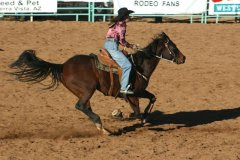Many times when someone prepares to take a picture, they will point the camera at the subject and then center the subject to the best of their ability. That is ok since they obviously will get the subject in the frame and probably won’t cut off much if any of the subject. As I mentioned, that’s ok, but let’s learn a different technique.
A popular tool that has been used by artists and photographers for years is the Rule of Thirds.
A popular tool that has been used by artists and photographers for years is the Rule of Thirds.
Lets get started with it. When looking through the viewfinder, picture a nine part grid in your mind. (if there is not a grid already built into your view finder.) Build the grid by imagining two horizontal lines across the viewfinder dividing it into thirds. Then do the same with two vertical lines. You now have a grid with nine different sections. The areas where the vertical and horizontal lines intersect are called the points of interest.
Ok, now here is how the Rule of Thirds works. When composing your picture, try to place your primary elements at, or around one or more of the points of interest. In essence what this does is to direct the eye away from the dead center of the picture and give the image more balance. This can make for a more interesting picture. In the case of a horizon or tree lines that flow from one side of the image to the other, this works well if you place the horizon or tree line near one of the horizontal grid lines rather than right in the middle of the frame. It works just as well with your vertical lines in the image. Keep in mind that the subject doesn’t have to be directly on a point of interest or exactly on a vertical or horizontal grid line. (just somewhere in the ares) This is where you use your judgment and decide what you like best. It’s a little trickier when shooting close up portraits. Instead of trying to use the points of interest for a face, try lining the eyes along the horizontal grid line.
Learn this technique and try it few times to see if you notice a more balanced and powerful final image. This rule should help, but don’t be afraid to break it if you feel more comfortable doing your own thing.
Click for more info:
http://www.goodpics.info/
http://www.awesomepics.info/
Ok, now here is how the Rule of Thirds works. When composing your picture, try to place your primary elements at, or around one or more of the points of interest. In essence what this does is to direct the eye away from the dead center of the picture and give the image more balance. This can make for a more interesting picture. In the case of a horizon or tree lines that flow from one side of the image to the other, this works well if you place the horizon or tree line near one of the horizontal grid lines rather than right in the middle of the frame. It works just as well with your vertical lines in the image. Keep in mind that the subject doesn’t have to be directly on a point of interest or exactly on a vertical or horizontal grid line. (just somewhere in the ares) This is where you use your judgment and decide what you like best. It’s a little trickier when shooting close up portraits. Instead of trying to use the points of interest for a face, try lining the eyes along the horizontal grid line.
Learn this technique and try it few times to see if you notice a more balanced and powerful final image. This rule should help, but don’t be afraid to break it if you feel more comfortable doing your own thing.
Click for more info:
http://www.goodpics.info/
http://www.awesomepics.info/












No comments:
Post a Comment